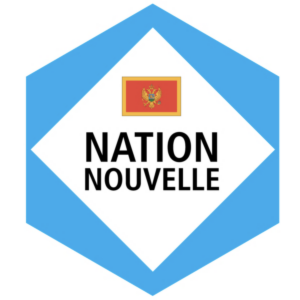Montenegro

The Block
Welcome Montenegro to Quilt of Belonging. At the time the physical Quilt was being made, Montenegro was not a separate nation. Its people and lands were part of the country of Serbia & Montenegro and as such were included in that block. Now, recognizing the distinct identity of this new nation, we invite you to learn about Montenegro in the Cultural Profile, photos and videos below.
Cultural Profile
Montenegro, whose name comes from the Venetian word for ‘black mountain’, is one of the youngest countries in the world. This small country, which lies on the Adriatic Sea, shares borders with Serbia, Bosnia-Herzegovina, Croatia and Albania. As its name states, most of the country’s terrain is made of rugged mountains, with a narrow coastal plain on the Adriatic dotted with beaches and ancient towns. The population is not ethnically homogenous: it is made of Montenegrins, Serbs, Croats, Bosniaks and Albanians. Montenegrin and Serb culture are close, and some people will easily identify with both cultural identities, while others see themselves only as Montenegrins. The official language is Montenegrin, a variation of the Serbo-Croatian language.
The culture of the country has been marked by many influences. The territory of present-day Montenegro has been successively part of the Roman Empire, the Slavic kingdom of Duklja, the Byzantine Empire, the Ottoman Empire, the Republic of Yugoslavia, and the Federation of Serbia and Montenegro. However, Montenegrins have developed their own culture and identity over time that they have based on the principles of Čojstvo i Junaštvo, meaning ‘humanity and bravery’. This code is said to influence many aspects of the culture and is exemplified in the numerous epic poems which constitute the masterpieces of Montenegrin literature. These epic poems are often sung, accompanied by the gusle, a one-stringed instrument played with a bow.
Traditional crafts include silversmithing, gold and silver filigree jewellery, wood carving and leatherwork. Embroidery is featured on household items as well as on traditional costumes and skull caps. These are often worked in gold thread. Dobrota needle lace is a type of lace that was adapted from Venetian lace in Medieval times. Geometric designs are used to create patterns unique to each lace-maker.
Montenegrins have only been listed under their own name in Canadian immigration records since the independence of their country in 2006. There are now close to 3,000 Montenegrins living in Canada
Montenegro, whose name comes from the Venetian word for ‘black mountain’, is one of the youngest countries in the world. This small country, which lies on the Adriatic Sea, shares borders with Serbia, Bosnia-Herzegovina, Croatia and Albania. As its name states, most of the country’s terrain is made of rugged mountains, with a narrow coastal plain on the Adriatic dotted with beaches and ancient towns. The population is not ethnically homogenous: it is made of Montenegrins, Serbs, Croats, Bosniaks and Albanians. Montenegrin and Serb culture are close, and some people will easily identify with both cultural identities, while others see themselves only as Montenegrins. The official language is Montenegrin, a variation of the Serbo-Croatian language.
The culture of the country has been marked by many influences. The territory of present-day Montenegro has been successively part of the Roman Empire, the Slavic kingdom of Duklja, the Byzantine Empire, the Ottoman Empire, the Republic of Yugoslavia, and the Federation of Serbia and Montenegro. However, Montenegrins have developed their own culture and identity over time that they have based on the principles of Čojstvo i Junaštvo, meaning ‘humanity and bravery’. This code is said to influence many aspects of the culture and is exemplified in the numerous epic poems which constitute the masterpieces of Montenegrin literature. These epic poems are often sung, accompanied by the gusle, a one-stringed instrument played with a bow.
Traditional crafts include silversmithing, gold and silver filigree jewellery, wood carving and leatherwork. Embroidery is featured on household items as well as on traditional costumes and skull caps. These are often worked in gold thread. Dobrota needle lace is a type of lace that was adapted from Venetian lace in Medieval times. Geometric designs are used to create patterns unique to each lace-maker.
Montenegrins have only been listed under their own name in Canadian immigration records since the independence of their country in 2006. There are now close to 3,000 Montenegrins living in Canada
